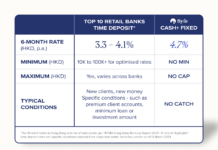
Syfe portfolios are designed to help you build long-term wealth by diversifying your investments and minimising your costs. To do that, we use exchange-traded funds (ETFs) as one of the building blocks of our portfolios.
What are ETFs?
ETFs are gaining popularity among investors worldwide. And for good reason. In addition to having lower fees, ETFs make it easy for investors to access different asset classes such as stocks, bonds, and commodities.
Simply put, ETFs are a basket of investments that mirror the performance of an index such as the S&P 500. For example, if you invest in a S&P 500 ETF, you’re automatically invested in all 500 stocks that make up the index. Even if some stocks fall, you still have your investments in other stocks to make up for the loss. That’s the beauty of diversification!
ETFs are incredibly versatile instruments too. You can invest in almost any asset class, country, sector, or theme with ETFs.
In terms of returns, ETFs aim to generate a return that closely reflects the performance of the index they track. So for an S&P 500 ETF, you can expect your return to be similar to the return of the S&P 500 index.
ETFs pay dividends too, if the companies they are invested in pay dividends. The ETF will collect the dividends and issue them to you quarterly or semi-annually. The payment schedule varies between ETFs and some may pay out dividends on a monthly or yearly basis.
ETFs as building blocks of Syfe portfolios
Syfe uses a combination of ETFs in all our managed portfolios because they:
Keep your costs low
ETFs have much lower fees and expense ratios than actively managed investments like mutual funds. That’s because ETFs passively tracks an index while active funds try to beat their benchmarks by picking and selling stocks. This frequently results in more trades and hence, higher costs.
High fees eat into any excess returns the active fund manager is able to produce, which is why 96% of large-cap active funds have underperformed their respective benchmarks over the past 20 years.
Ultimately, less money paid to your fund manager means more money for you.
Offer cost-efficient diversification
As mentioned, ETFs offer access to virtually all investable markets. With a few ETFs, you can conveniently – and affordably – invest in global tech stocks the likes of FAANG (Facebook, Amazon, Apple, Netflix, and Google), or big-name brands from around the world such as Swiss consumer giant Nestle and Japanese carmaker Toyota.
Due to their low cost and versatility, you can build an efficient and effective portfolio entirely from ETFs. For example, our Syfe Core Growth portfolio holds a mix of stock, bond and gold ETFs alongside individual stocks to provide global diversification and broad-market exposure.
On the other hand, our Healthcare Innovation thematic portfolio consists of ETFs focusing on genomics, biotechnology, pharmaceuticals and other medical sectors to provide targeted exposure to the healthcare industry.
Syfe also helps you reinvest any dividends received, at no cost. Reinvesting your dividends helps you take advantage of compound interest and is a better move for most investors.
What ETFs does Syfe use?
At Syfe, we select ETFs with these key features:
- Highly liquid. You can buy or sell your ETFs quickly and easily.
- Low expense ratio. You save more on investing costs.
- Low tracking error. You get as close to market returns as possible, the very goal of passive investing.
The ETFs we have included in Syfe Core portfolios are well-diversified across asset classes, sectors, and geographies.
For thematic portfolios, our investment team closely monitors new themes and trends for possible inclusion. We may add or switch an ETF in your thematic portfolio if our research leads us to believe it provides more holistic exposure to your chosen theme.
Why not unit trusts?
Although unit trusts also offer diversification benefits, ETFs are simply the better option for your wallet.
The expense ratios of many unit trusts range from 1% to 2% a year. In comparison, Syfe Core portfolios have an average expense ratio of just 0.16% to 0.24% a year.
This fee difference holds true even for unit trusts that track an index, also known as index funds. For example, most S&P 500 ETFs charge 0.03% to 0.07% per year in expense ratios.
Over the years, the fees saved can make a substantial difference to your returns.
How to invest in ETFs
You can invest in a globally diversified, low-cost ETF portfolio through Syfe. There is no minimum investment and no lock-in. Depending on your investment goals, you can choose Syfe Core portfolios for long-term investing, and/or Syfe Select thematic portfolios for exposure to global megatrends (apart from Disruptive Technology portfolio which is made up of individual stocks). All portfolios have a low management fee ranging from 0.35% to 0.65% per year.
Simply download the Syfe app to start investing. Open your Syfe account and get started in just 10 minutes.














